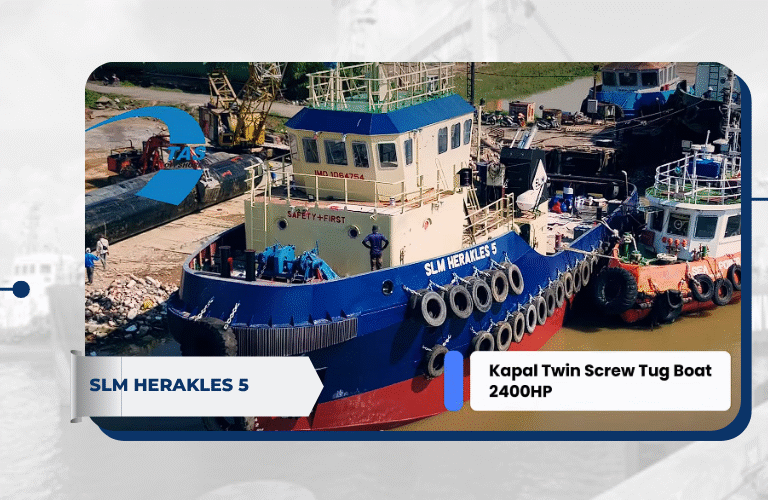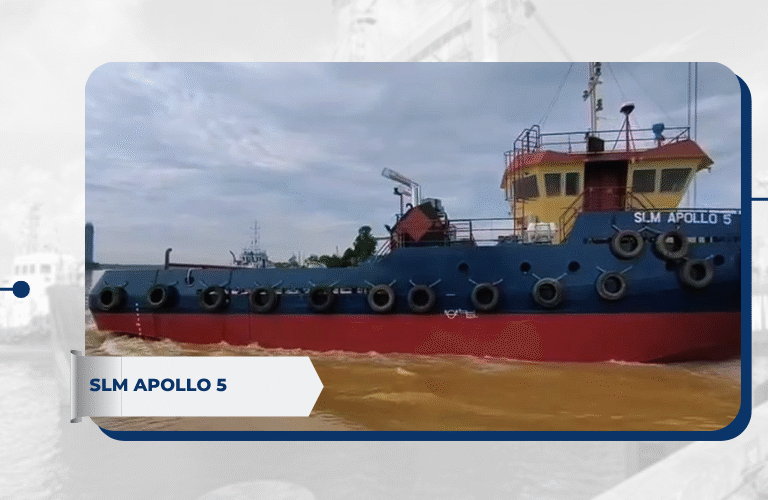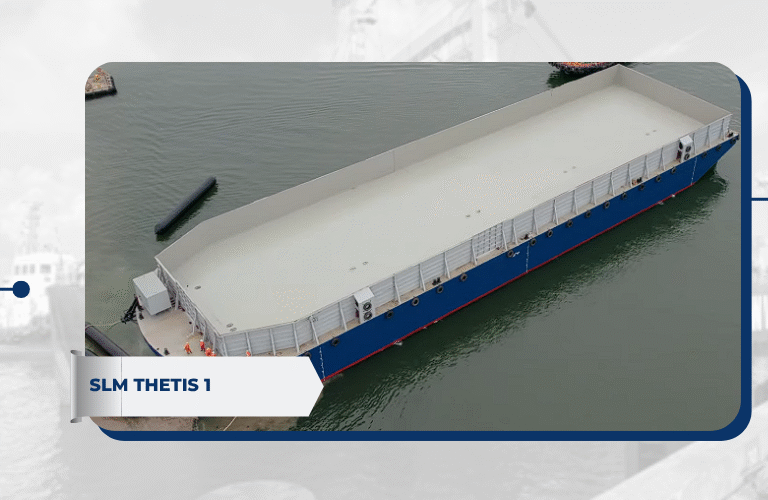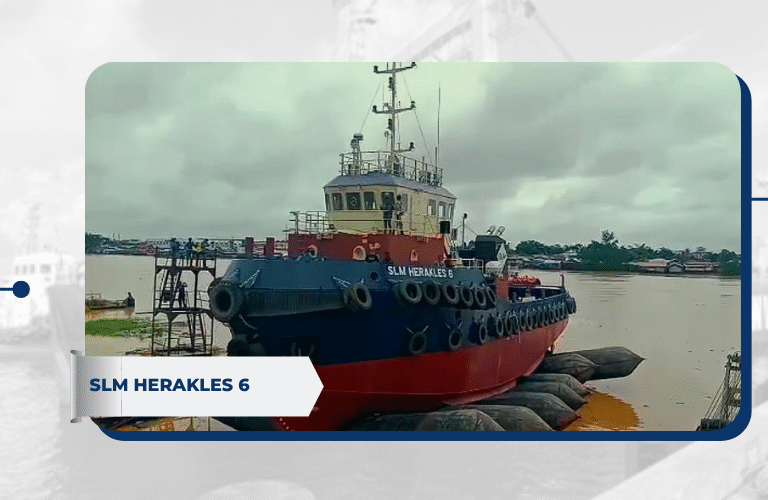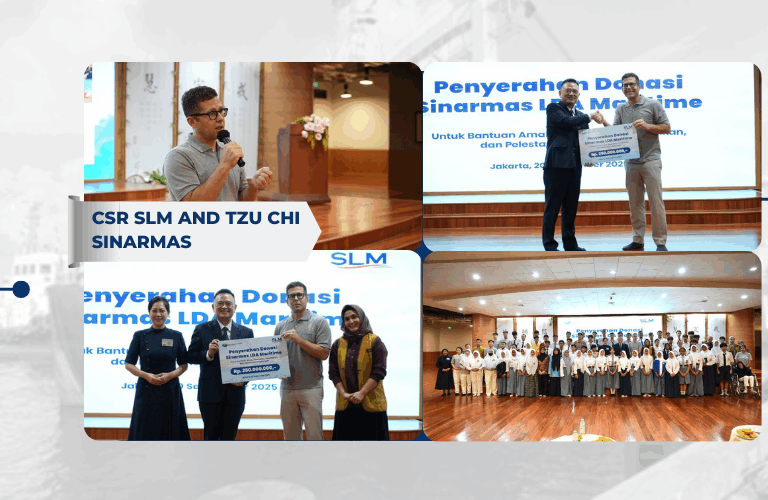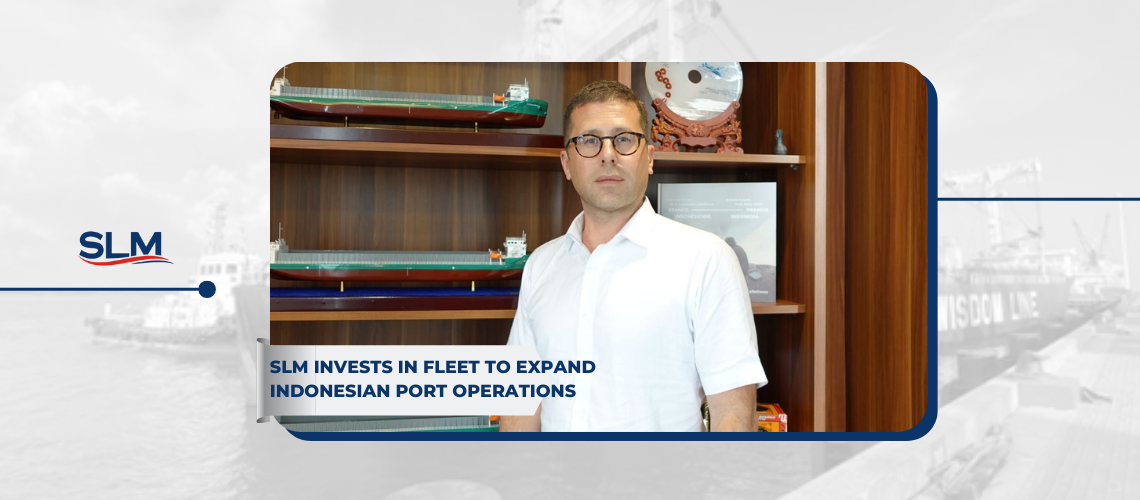
One of the largest vessel owners in Indonesia has ordered more tugs as it anticipates strong growth in harbour work
Sinarmas LDA Maritime (SLM) is in the middle of a fleet expansion campaign, adding new tugboats, dry cargo barges and tanker barges from Asian shipyards. The Indonesian shipowner and logistics provider has invested US$200M in the past two years and committed US$50M for investment in 2025 and 2026, with another US$50M under discussions.
For SLM chief executive Matthieu Lavoine, this is a significant amount to invest, but vital in the company’s drive to expand its logistics and transport services.
Its port operations, providing harbour tugs, pilotage and stevedoring in Indonesian ports, represent around 30% of the group’s total annual revenues; with another 30% coming from transporting dry bulk (coal, nickel ore and paper pulp) domestically; 30% from transporting liquids (crude palm oil, biofuel and oleochemicals) within the country; and 10% from shore-based logistics operations.
Port operations are mainly provided on long-term contracts and towage concessions, whereas domestic transport can be on both long and short-term contracts, depending on the type of cargo.
“We are actively expanding our three main business units, having ambitious growth targets for them,” Mr Lavoine tells International Tug & Salvage. “We have multiplied our revenue by 10 over the past 10 years, and we wish to achieve the same feat during the next 10 years. At such, we are permanently building new vessels, acquiring companies, purchasing secondhand tonnage and chartering vessels.”
To date, SLM has remained a pure Indonesian player, but it has grown to a critical size to address international dry bulk, liquid bulk and azimuth stern drive (ASD) tug markets. As of February 2024, it owned a fleet of 70 twin-screw tugs, paired with 70 barges, 25 ASD tugs and 13 deck cargo vessels. It also charters 10 to 20 tugs and barges, two to five bulk carriers and a few chemical tankers.
SLM’s flat-top barges range from 2,000 dwt to 14,000 dwt, and its tank barges from 2,000 dwt to 7,000 dwt, all paired with tugs to transport commodities within the Indonesian archipelago.
“As for our fleet of ASD tugs, we provide towage services on the islands of Sumatra, Java, Kalimantan, Bali, Sumbawa, Sulawesi and Papua to various kind of ports: coal power plants, palm oil refineries, mining facilities, pulp and paper factories, oil and gas terminals and cement factories,” says Mr Lavoine. These handle all kinds and types of vessels, from barges to Capesize bulk carriers. “We are growing at a fast pace, adding new vessels to our fleet almost every month.”
Newbuilding campaign
In 2024, SLM received six deck cargo vessels, four flat-top barges, two tank barges and six twin-screw tugs from shipyards. Tuong Aik Shipyard in Malaysia constructed the Apollo and Helios series of tugs and Palma Progress Shipyard in Batam, Indonesia built the Mars series of harbour tugs. Rizhao Gang Da Shipbuilding Industry and Jiangsu Huatai Shipbuilding, both in China, built the barges and ships.
“In 2025, we will take delivery of two flat-top barges, two tank barges and seven twin-screw tugs,” says Mr Lavoine. Tuong Aik Shipyard will construct these tugboats, with the first scheduled for delivery in May 2025.
“In early January 2025, we ordered four ASD tugs from a shipyard in China, but they will only be delivered during Q2 2026. We are now discussing with our shareholders about the opportunity to build six more ASD tugs, plus more flat-top barges, tanker barges and twin-screw tugs. We are growing aggressively, hence the need to increase our fleet.”
Technical and operational requirements are different between SLM’s twin-screw tugs, which have a bollard pull of around 20 tonnes and a quick-release towing hook; while the ASD tugs have a bollard pull of 50 tonnes, larger deck space and are equipped with a towing winch.
“There is a scarcity of ASD tugs available to purchase. It is hard to find secondhand tugs, so it is a good market to invest in.” Overall, there is a shortage of tugboats in Indonesia. “There are not enough, as people decided to build barges and not many built tugboats,” says Mr Lavoine.
“Our new ASD tugs will be designed for port operations and for jack-up rig towing. We are slowly entering the offshore market, just in Indonesia.”
SLM is splitting its ASD tug usage 20% for offshore towage and 80% in the port business. All its ASD tugboats have FiFi-class fire-fighting systems and are prepared to tackle maritime emergencies. “We have done fire-fighting jobs, such as extinguishing a fire on a tanker and providing emergency towage to container vessels,” says Mr Lavoine.
“We put FiFi on our tugs to gain a competitive advantage and it becomes useful to have.”
Sustainable fleet
Adding newbuilds mean SLM’s emissions are rising, but it is working towards sustainable towage operations and reducing emissions from its fleet. “The carbon footprint of our new vessels is much lower than in the past,” Mr Lavoine explains. “We have installed solar panels on all our new tanker barges, our newly built deck cargo vessels are equipped with organic Rankine-cycle devices to use the energy from the steam generated by the boiler and convert it into electric power, and we constantly work with our designers to improve the efficiency of our vessels.”
As an example, between its first generation of deck cargo vessels built in 2017 and the third generation of such vessels built in 2024, the fuel consumption has been reduced by 10% for the same speed. It has also changed the fuels used on the tugboats.
“All our tugs must be able to burn biofuel, as a blend of 60% diesel and 40% biofuel has been made mandatory by the Indonesian government,” Mr Lavoine explains. “There is good availability of biofuels, even in remote locations in Indonesia, which has a lot of biofuels and bio commodities.” However, this is not the case with other green alternatives.
“We are not moving to electric propulsion or LNG fuel as the infrastructure in Indonesia is not ready.”
Crew training
SLM employs Indonesian seafarers, with about 4,000 crew working regularly on board its vessels. “We partner with various Indonesian merchant marine schools, sponsor them and permanently welcome cadets on board our vessels,” says Mr Lavoine.
“Our crewing, quality, health, safety and environment [QHSE], technical and operations departments have implemented an inhouse training programme, whose attendance is compulsory for all crew.”
The programme includes three days of training every year in SLM’s head offices for all its seafarers. On top of that, each vessel is inspected and assessed at least three times a year by the company’s QHSE department.
This article was published in Riviera Maritime Media through this link after its journalist, Martyn Wingrove had interview with Matthieu Lavoine, CEO Sinarmas LDA Maritime.


